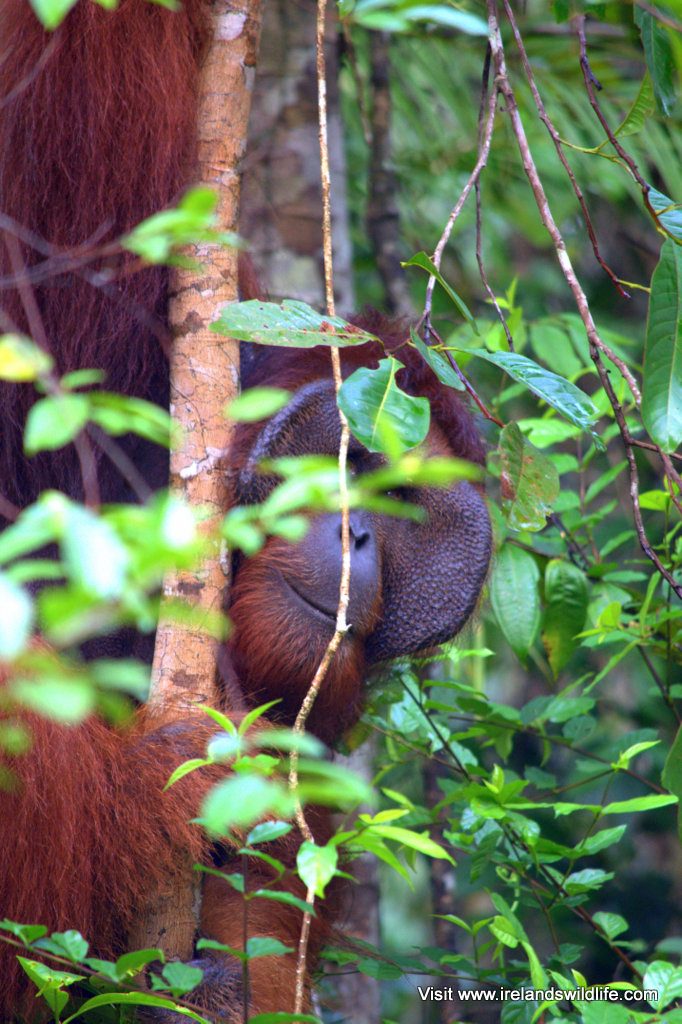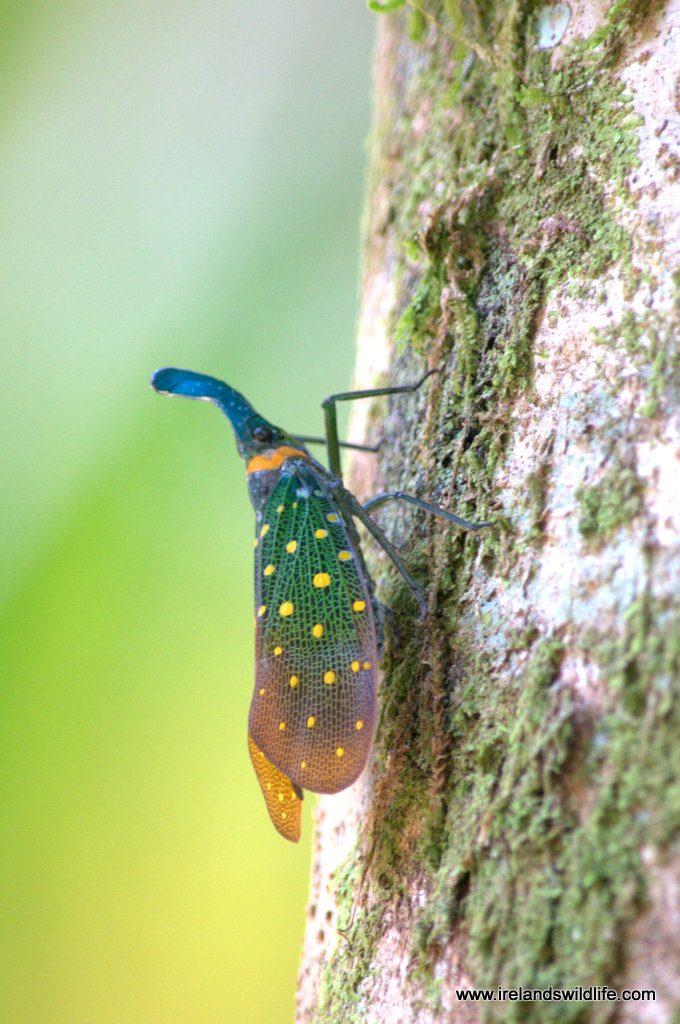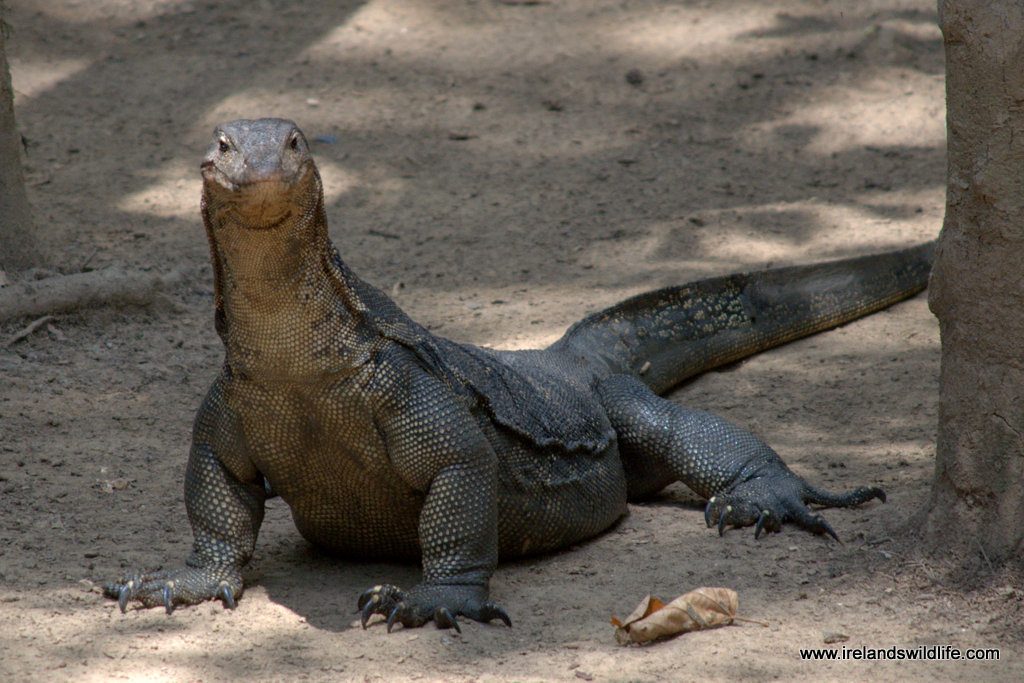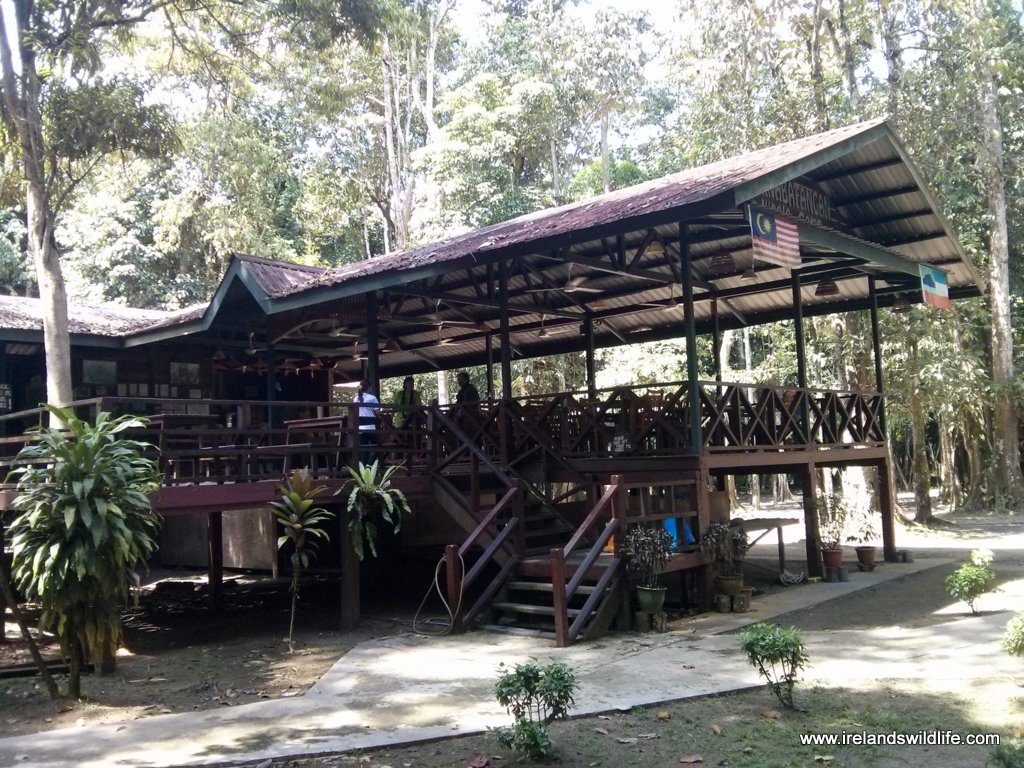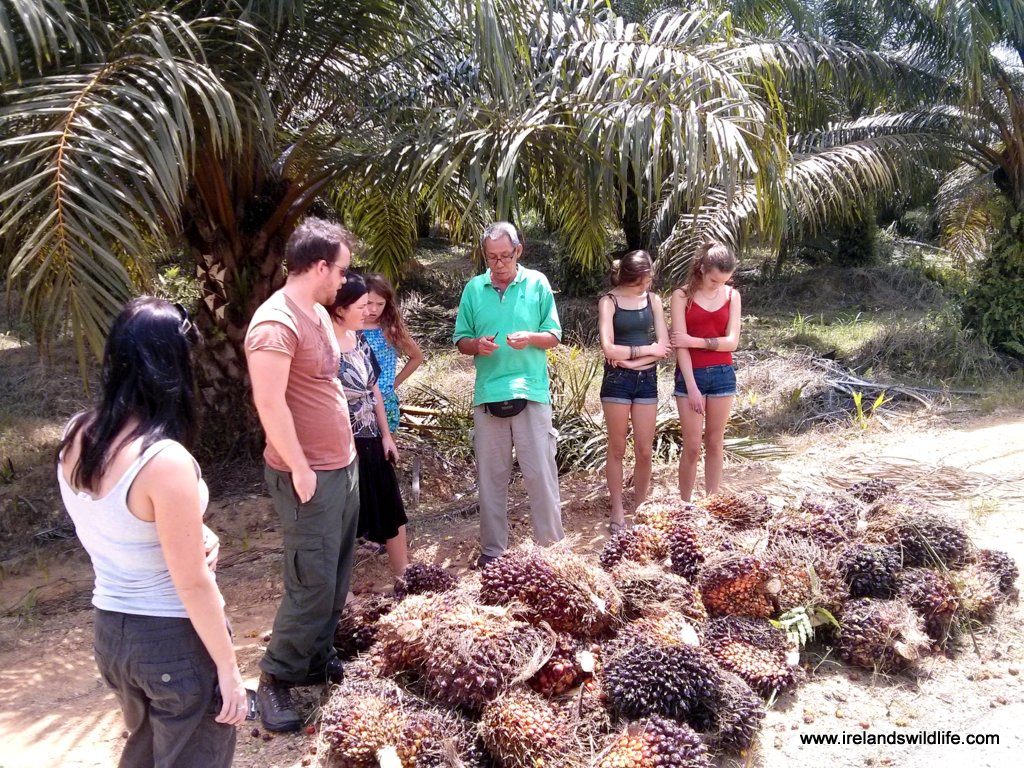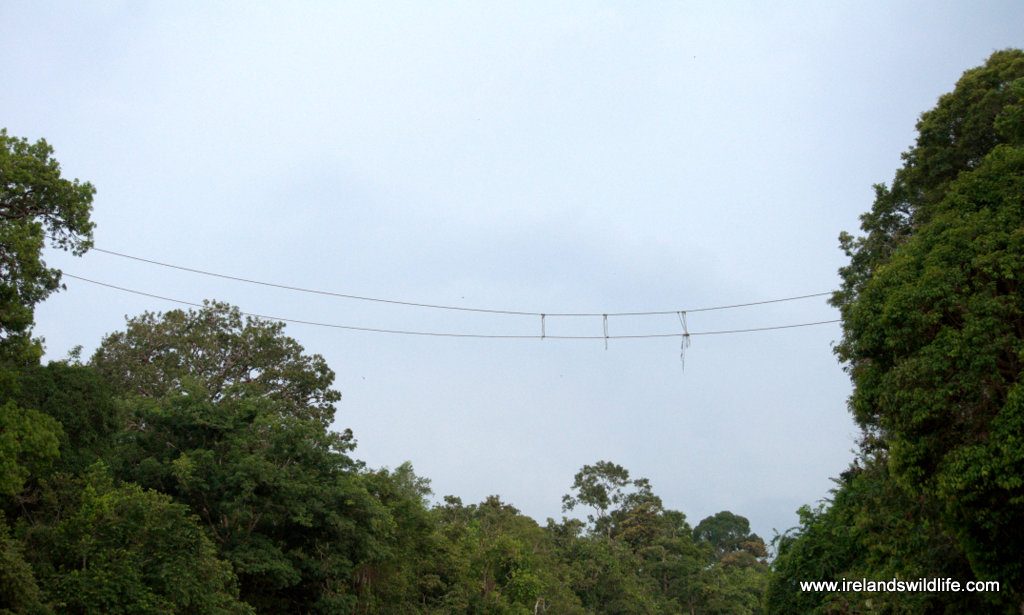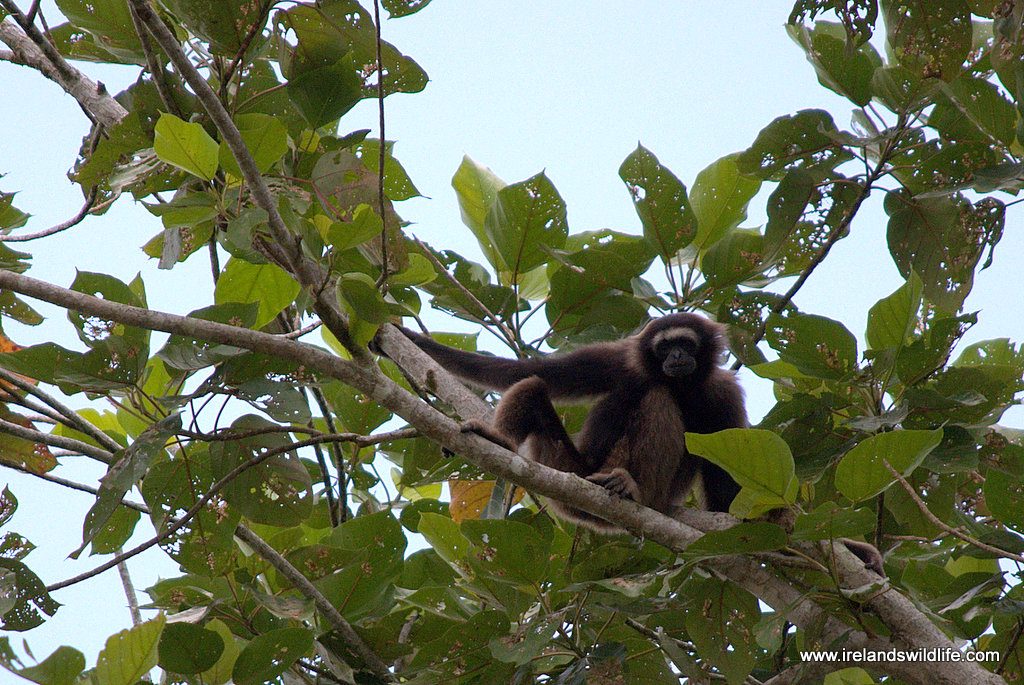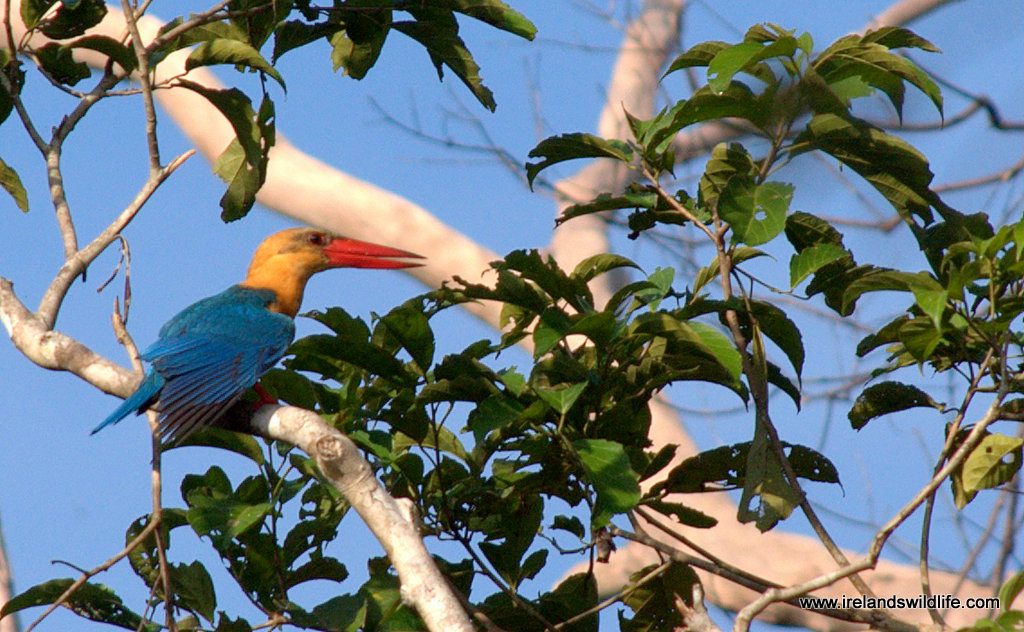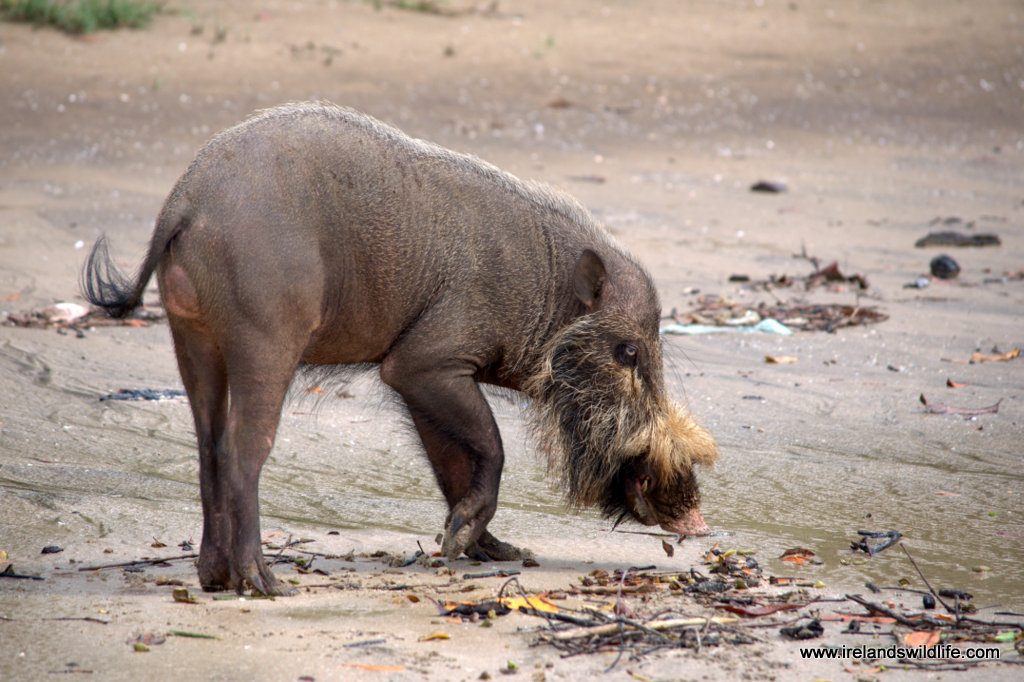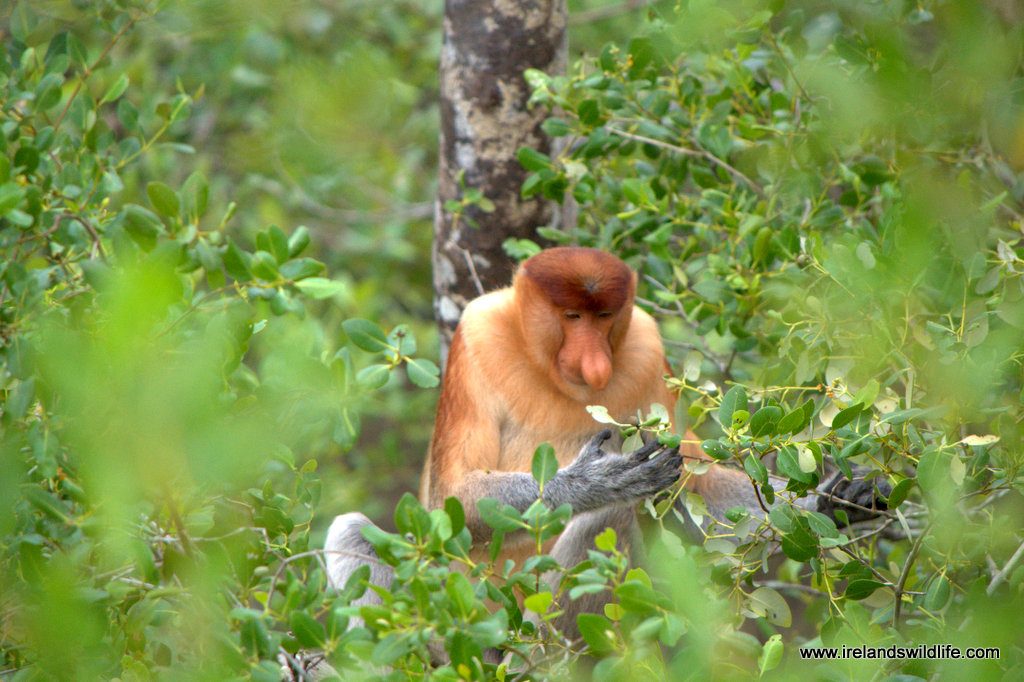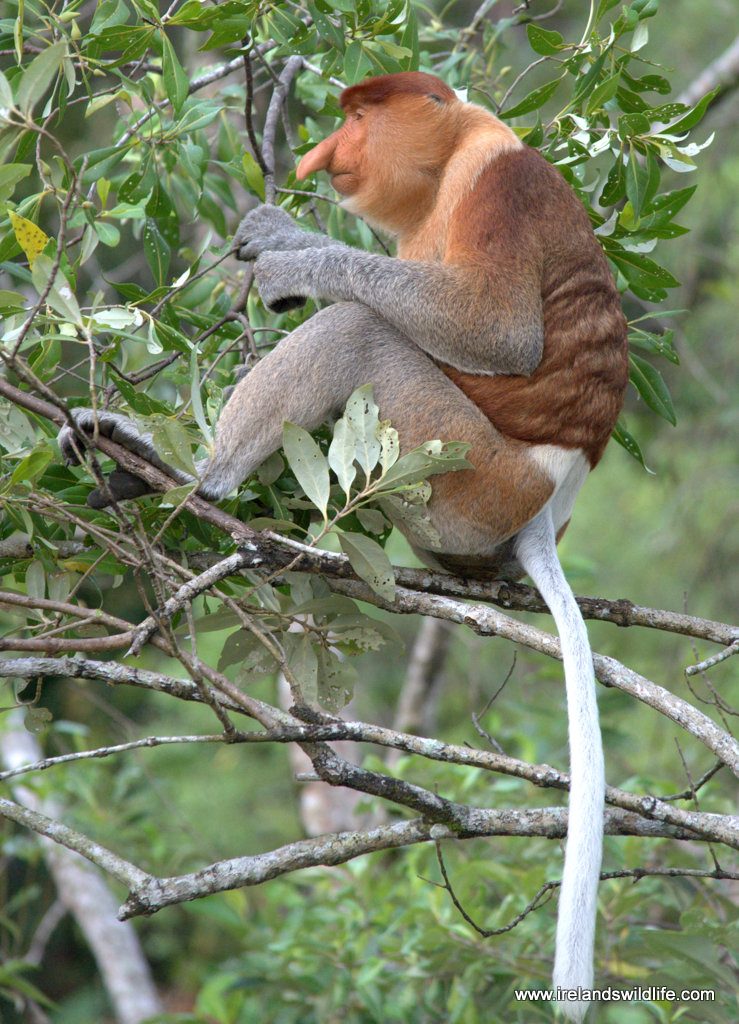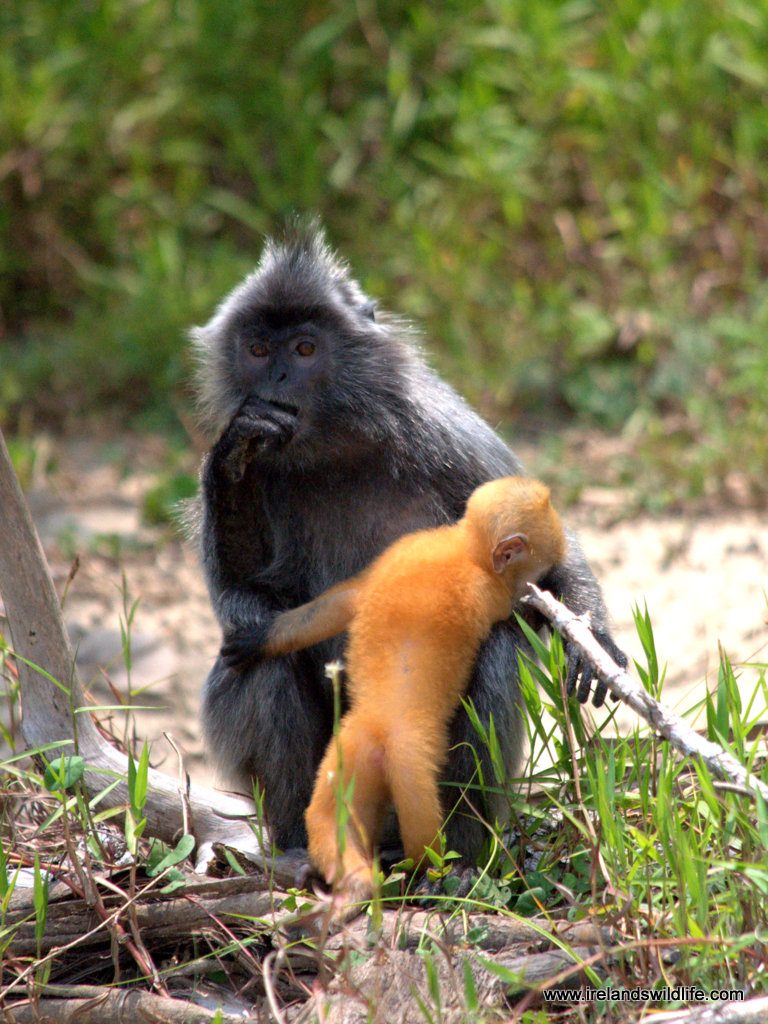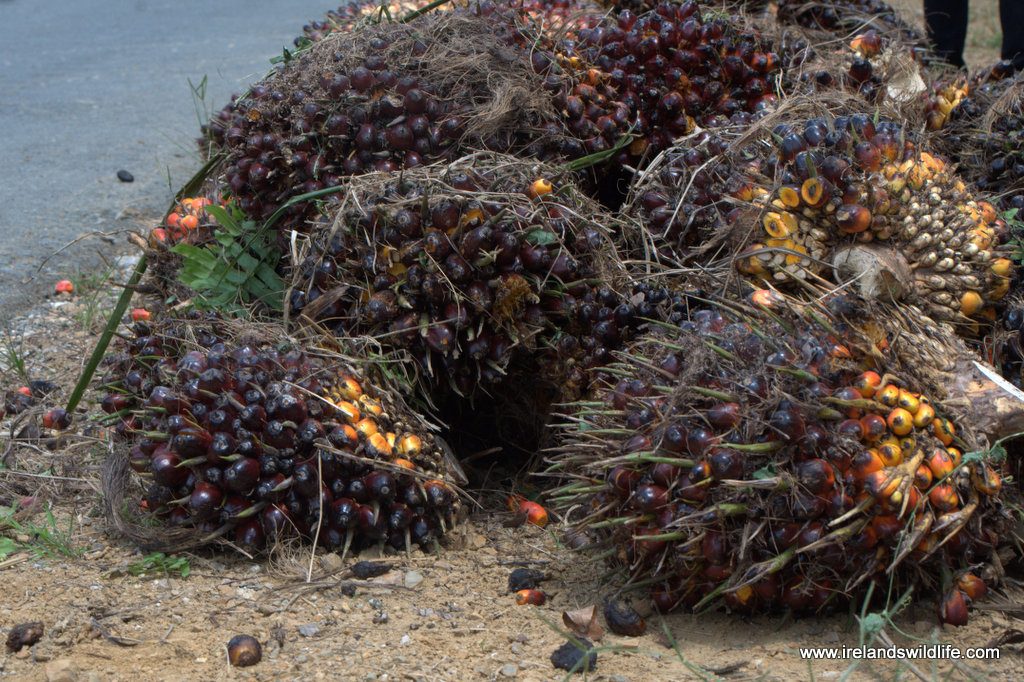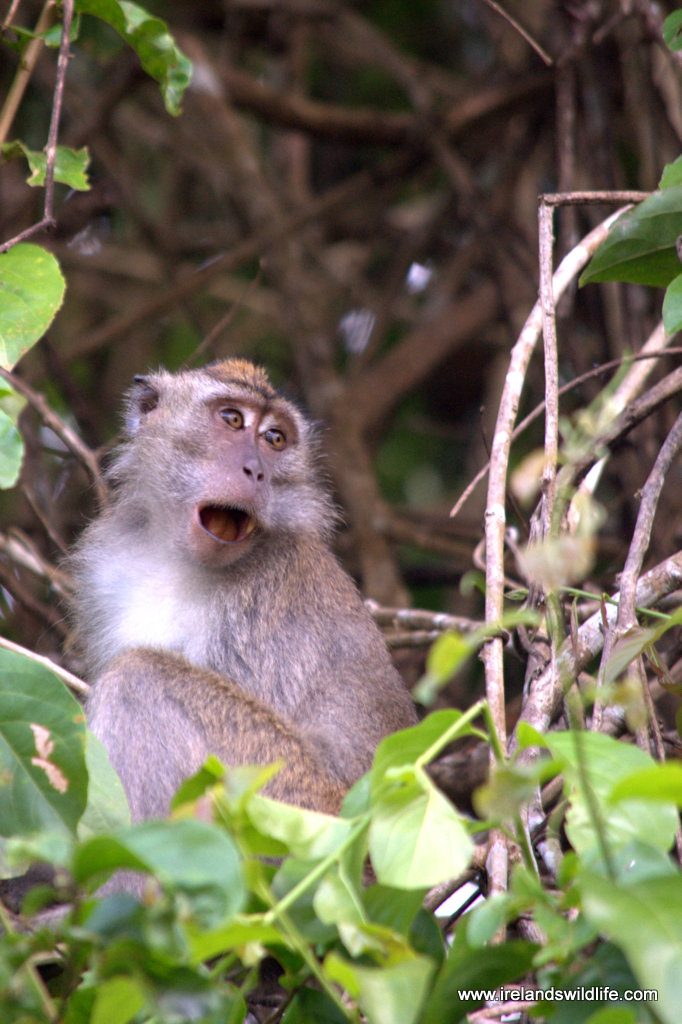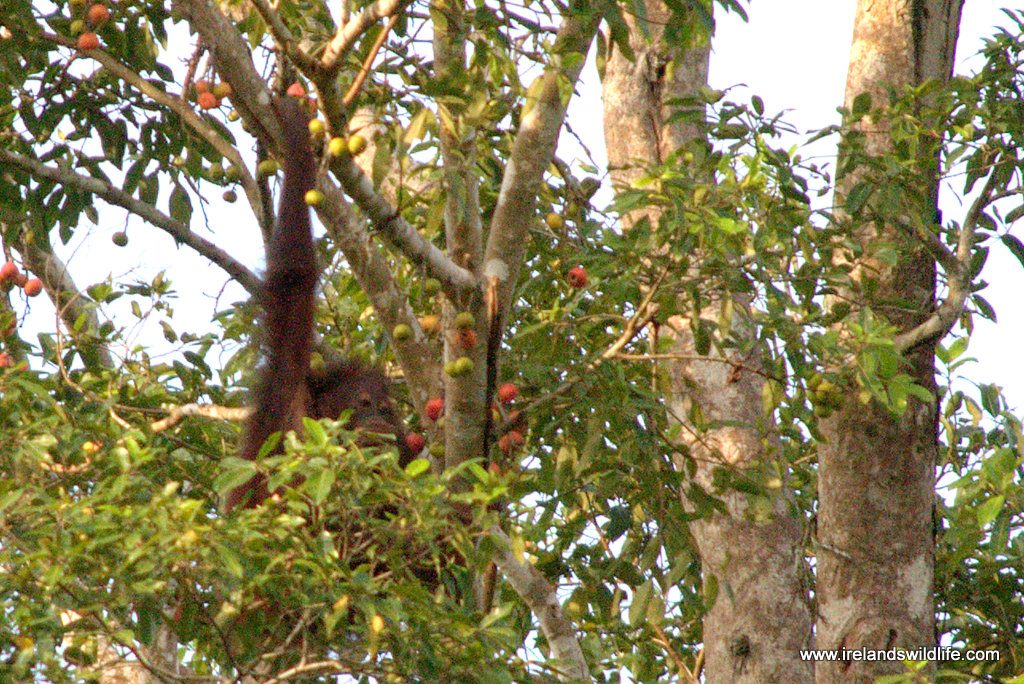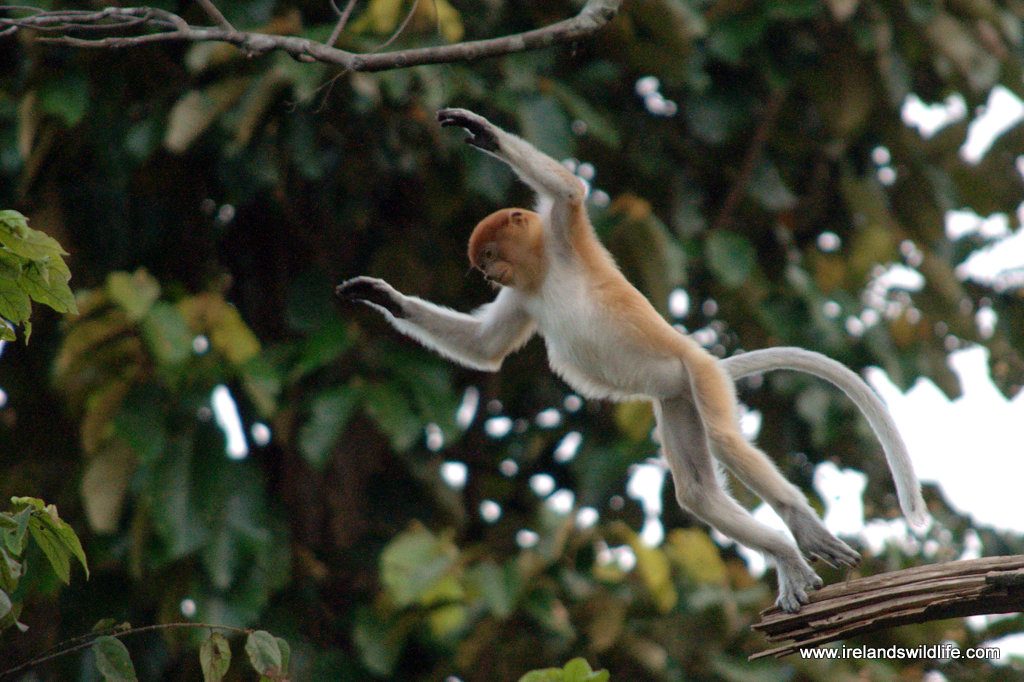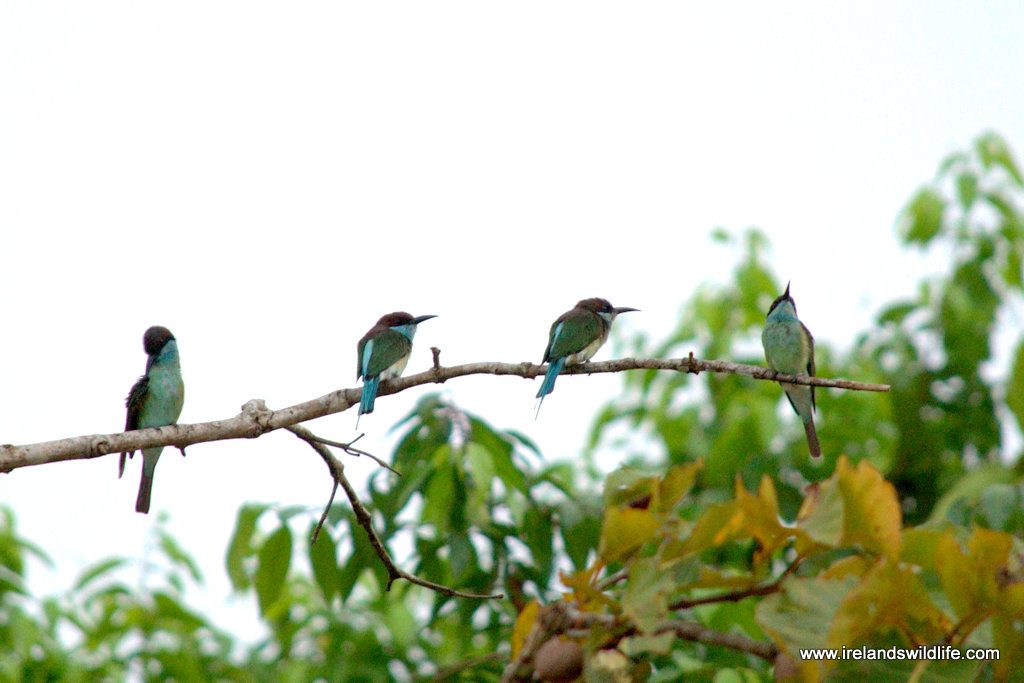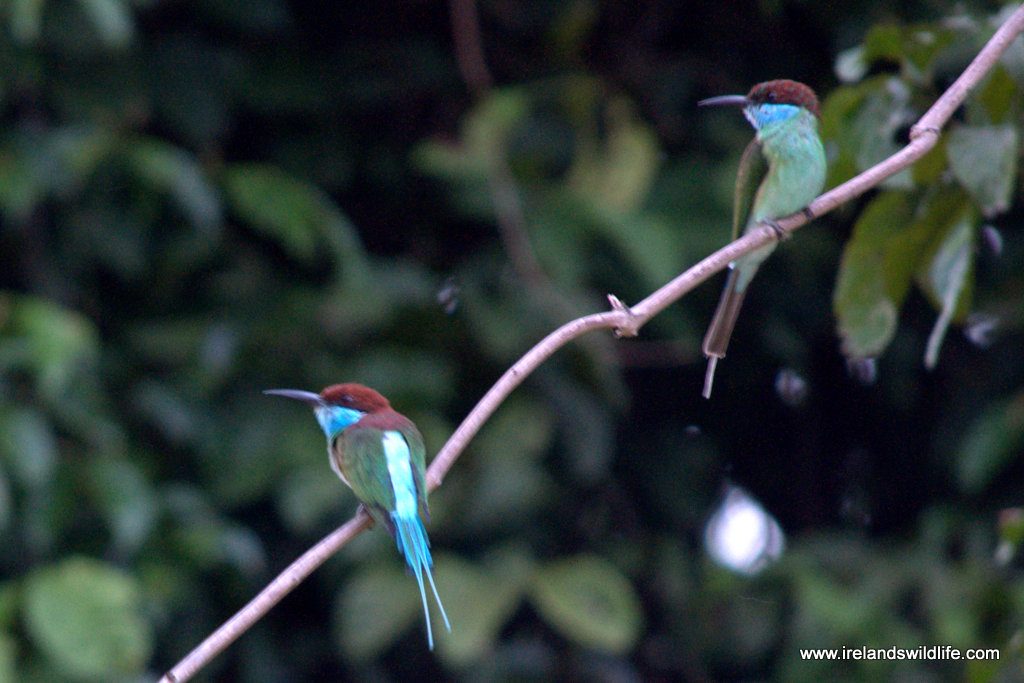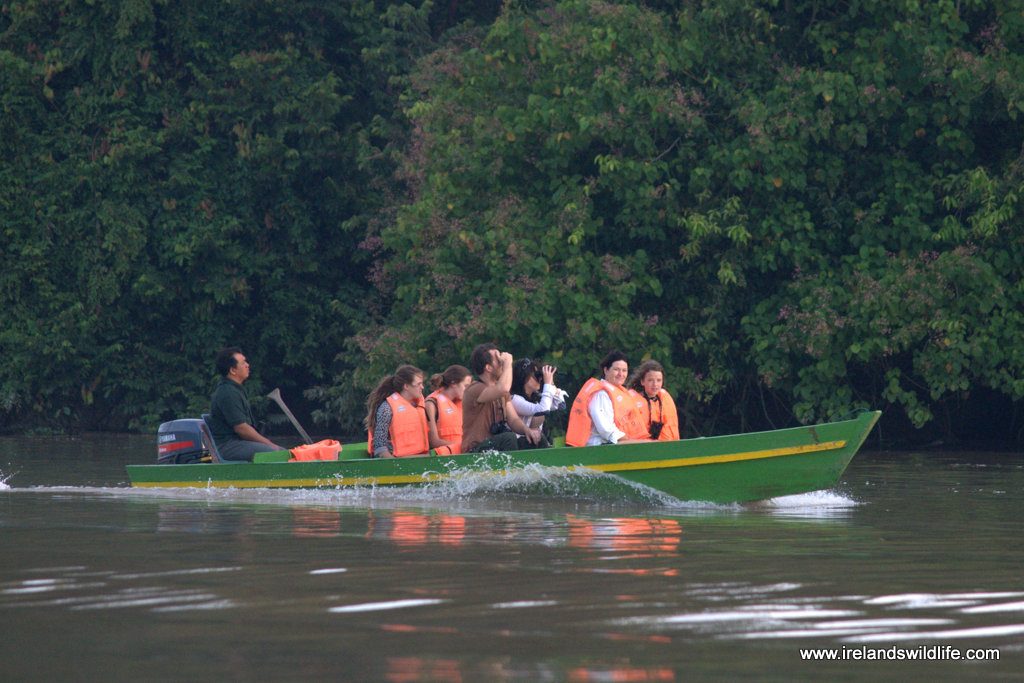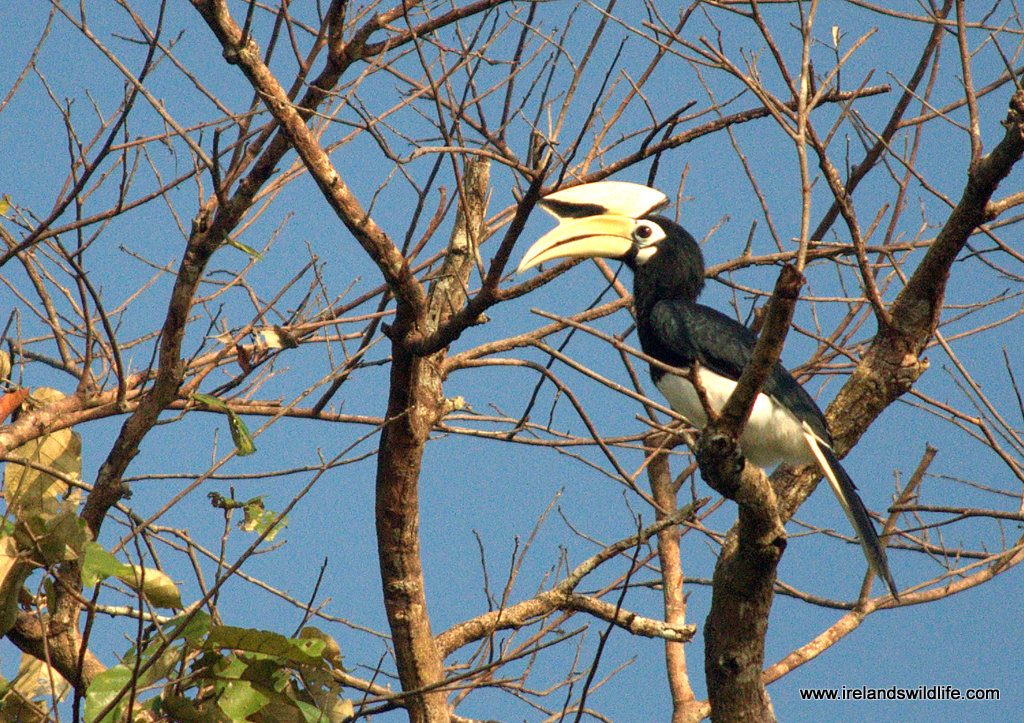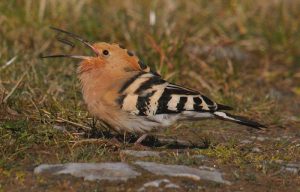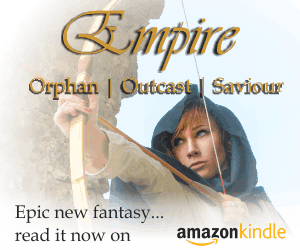
The gibbon sat in a tree, gazing out across the turbid waters, its long, sinuous limbs somehow more graceful than gangly. It was the black variant of the endemic Bornean gibbon, and a magnificent specimen. As our guide manoeuvred the small boat to give us better views of one of Borneo’s most iconic primates, I took a second to look around at my three teenage daughters.
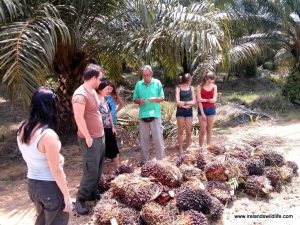
The looks of wonder and delight on their faces reinforced once more that leaving Ireland on a four month odyssey across Australia and Southeast Asia had been a good decision. What they were learning from the experience, both about the natural world and the different cultures and communities we encountered along the way, simply can’t be taught in the classroom.
We’d just left the tiny village of Bilit in a small boat on our way to the Kinabatangan Jungle Camp (aka KJC), were we would spend a few days immersed in the amazing jungle wildlife of the region. What a start to a stay that was to be a highlight of our four month trip.
Kinabatangan: a special place for wildlife
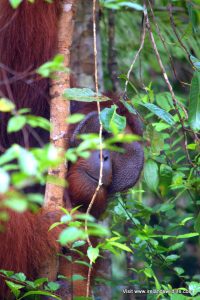
At 560km Sungai Kinabatangang is the longest river in the east-Malaysian state of Sabah on the island of Borneo. The lowland dipterocarp rainforest along the lower reaches of the river offers refuge to an eclectic mix of wildlife in a region beset on all sides by the burgeoning palm oil industry.
Kinabatangan is a stronghold for wild Bornean orangutans, holds Malaysia’s largest populations of the endemic proboscis monkey, is home to nearly 200 species of birds, 10 primates, and a population of the extremely rare Borneo pygmy elephant.
If you’re a wildlife enthusiast visiting this part of the world this is an area you’d be crazy to miss.
My wife and I had been to the region before — way back in 1998, before we had the girls. I wrote an account of that trip, the woes of the region’s orangutans and the rampant expansion of the palm oil industry for Wild Ireland magazine. Returning with the children was something we’d spoken about for a long time.
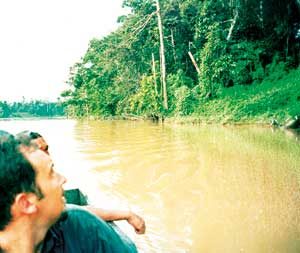
The intervening 17 years has had quite an impact on the area. The inexorable march of oil palm plantations has encroached on the forest from all sides, pushing the boundaries of what is now (thankfully) the Kinabatangan Wildlife Sanctuary, a 26,000ha area gazetted as a protected wildlife refuge in 2004 under the administration of the Sabah Wildlife Department.
Although protected the area is largely isolated… surrounded by human activity. That fact is starkly illustrated by the man-made “orang-utan rope bridges” we saw spanning smaller watercourses off the main river channel. These bridges offer orang-utans and other primates a way to cross where they can no longer make their way around because of oil palm plantations further upstream.
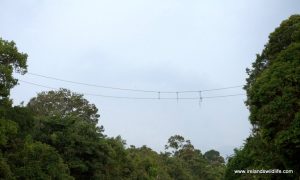
Another very noticeable change is the scale of the eco-tourism operation today. Back in the late 1990s there were just two jungle camps operating in the region. The only boats you’d encounter on the river were those of locals going about their daily business and of logging companies exploiting the then unprotected forest. Accommodation was basic to say the least. Crude wooden huts with no electricity, no running water and rudimentary sleeping pallets were the order of the day.
Today there are literally dozens of lodges and camps dotted along the river bank, including everything from small family run affairs up to large-scale commercial operations catering to the high-end eco-tourist, and the river is abuzz with small boats ferrying tour groups to and from the best wildlife watching areas. It has all become very busy.
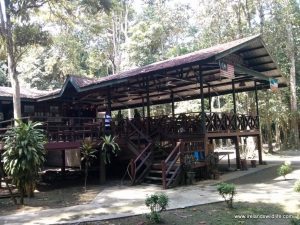
As we pulled up at the wooden jetty of the Kinabatangan Jungle Camp it was clear that this was most definitely still a family run enterprise. Owner Robert Chong is a keen birder and has a genuine love for the area and its wildlife. He runs the Jungle Camp very much in that vein, putting wildlife first, and sharing his passion and enthusiasm for nature with his guests.
Accommodation at the camp is surprisingly comfortable, given the remote location. Rooms are large and spotless, have good beds, en-suite bathrooms with running water and electricity, hot showers and flushing toilets (a far cry from our experience of the region the first time around). Yet despite the creature comforts the camp retains that feeling of being immersed in the middle of remote jungle.
The other thing that deserves more than just a mention here is the food. The camp offers full-board meals and breakfast, lunch and dinner are included in your stay. All food is freshly prepared on-site using local produce and is served up buffet-style with more than enough for everyone. While the wildlife was undoubtedly the highlight of the stay, for me the food came a close second. It was absolutely superb.
Wildlife everywhere
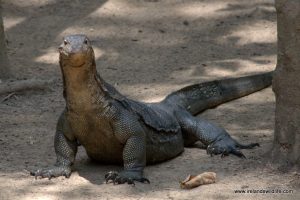
For all the challenges and changes the intervening years have brought, the biodiversity of the Kinabatangan region remains phenomenally rich. Just wandering around the Jungle Camp clearing and nearby forest the sheer diversity of plants, insects and bird is bewildering. At the raised communal dining / common area at the centre of the camp you get great views of other regular visitors to the camp like Bornean bearded pig, long tailed macaque, huge water monitors and even the endangered Storm’s stork.
Everywhere you look there’s something new to see. I was like the proverbial “kid in a candy store”, I didn’t know where to point my binoculars next… and we hadn’t even been on the wildlife watching boat cruises yet.
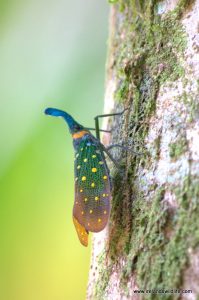
A small boat is probably the best way to experience the wildlife of any jungle ecosystem. The wooden craft used by the Kinabatangan Jungle Camp are hand made by local craftsmen using locally sourced material. Powered by modern outboard motors they are stable, comfortable and very manoeuvrable: perfect for navigating narrow and sometimes shallow jungle watercourses.
Our guides on the afternoon and early morning cruises were friendly, knowledgeable, and highly tuned to the forest ecosystem. They were often the first to spot wildlife on the river banks.
It’s always telling when other wildlife tour operators make a bee-line for your boat whenever you cut your engines. The KJC guides obviously enjoy a reputation on the river for finding wildlife.
It’s hard to list the wildlife highlights of our stay, there were so many.
On the bird front they included at least four species of hornbill, large raptors like the crested serpent eagle, and tiny ones like the Sabah endemic white-fronted falconet (one of the world’s smallest raptors), blue-throated bee eaters, several species of kingfisher and many, many more. Primates included the Borneo gibbon, the silver leaf monkey, long-tailed and pig-tailed macaque, the bizarre-looking proboscis monkey and no less than three encounters with wild orangutans, including a very special moment with a mother and baby.
Photos can hardly do the experience justice, but the slideshow below offers a hint of what the Kinabatangan has to offer. If you’re travelling in this part of the world it’s a wildlife experience not to be missed, and I’ll certainly be back for another visit some day.
Many thanks to Robert Chong and staff at the Kinabatangan Jungle Camp for making our stay in October 2014 such an enjoyable and memorable one.
You can find out more about the Kinabatangan Jungle Camp on their website here, check out their Facebook page here, their Twitter profile here, their instagram page here and their Trip Advisor page here.


